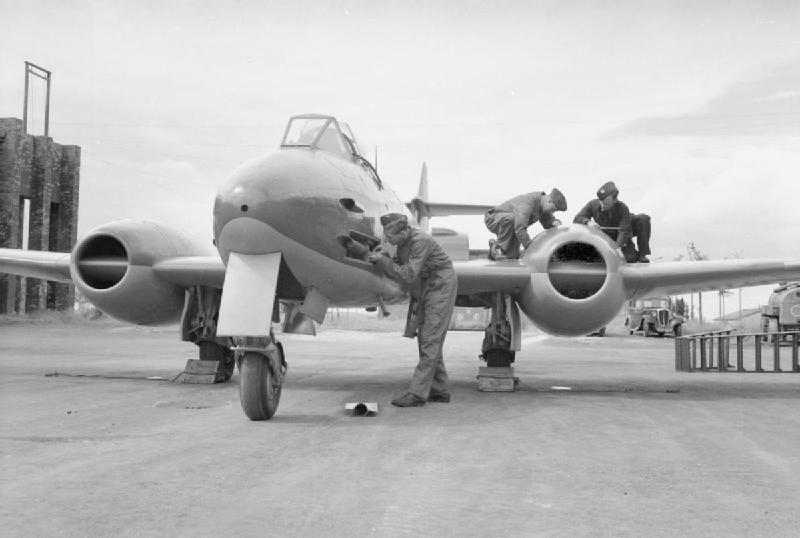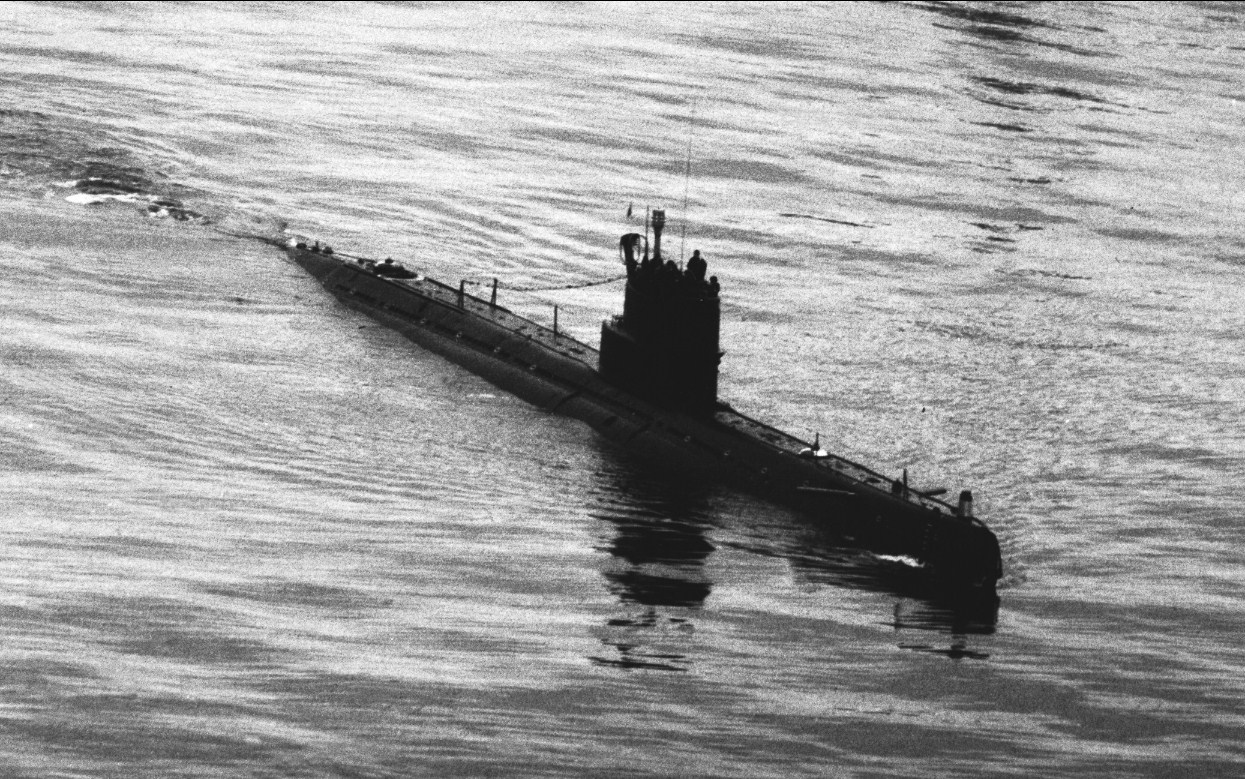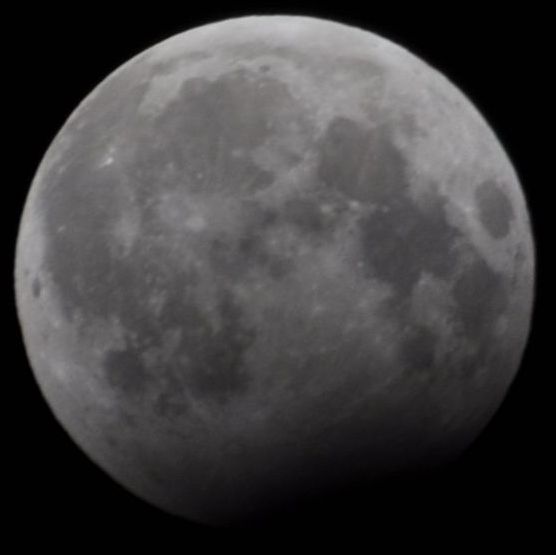|
Yellow Duckling
Yellow Duckling was an early development of an infrared linescan camera, developed for the detection of submarines during the Cold War. The name is one of the series of British List of Rainbow Codes, Rainbow Codes. Origins Infrared detection systems had been considered as far back as the 1930s. During World War II, the Germans were the innovators in this field. Studies of captured FuG.280 Kielgerät from a Junkers Ju 88#Ju 88G, Ju 88G night fighter showed the use of a lead(II) sulfide, lead sulphide (PbS) detector. This was developed by the British at Telecommunications Research Establishment, TRE into a lead telluride (PbTe) detector and the use of liquid nitrogen cooling to improve sensitivity and extend the lower range of temperatures it could detect. Kielgerät also demonstrated the use of a rotating optical chopper, 'chopper' mirror and a simple form of boxcar integrator to extract a usable signal from a signal noise, noisy detector. These early detectors had no scanning ... [...More Info...] [...Related Items...] OR: [Wikipedia] [Google] [Baidu] |
Infrared Linescan
Infrared (IR), sometimes called infrared light, is electromagnetic radiation (EMR) with wavelengths longer than those of visible light. It is therefore invisible to the human eye. IR is generally understood to encompass wavelengths from around 1 millimeter (300 GHz) to the nominal red edge of the visible spectrum, around 700 nanometers (430 THz). Longer IR wavelengths (30 μm-100 μm) are sometimes included as part of the terahertz radiation range. Almost all black-body radiation from objects near room temperature is at infrared wavelengths. As a form of electromagnetic radiation, IR propagates energy and momentum, exerts radiation pressure, and has properties corresponding to both those of a wave and of a particle, the photon. It was long known that fires emit invisible heat; in 1681 the pioneering experimenter Edme Mariotte showed that glass, though transparent to sunlight, obstructed radiant heat. In 1800 the astronomer Sir William Herschel discovered ... [...More Info...] [...Related Items...] OR: [Wikipedia] [Google] [Baidu] |
Red Top (missile)
The Hawker Siddeley (later British Aerospace) Red Top was the third indigenous British air-to-air missile to enter service, following the de Havilland Firestreak and limited-service Fireflash. It was used to replace the Firestreak on the de Havilland Sea Vixen and later models of the English Electric Lightning. Originally designed as an upgraded version of the Firestreak, Red Top emerged as a much more capable weapon, with roughly double the range, a more sensitive seeker giving limited all-aspect capability, and an even larger warhead than the already-large one in Firestreak. In its primary role as an anti-bomber weapon fired at medium and high altitudes, it offered a significant improvement in overall performance. Red Top was originally intended to replace Firestreak outright, but carrying the missiles on the Lightning required additional area to be added to the Lightning's vertical stabilizer for stability at high speed. For this reason, Firestreak continued to be used on older ... [...More Info...] [...Related Items...] OR: [Wikipedia] [Google] [Baidu] |
Elevator Lock
An elevator or lift is a cable-assisted, hydraulic cylinder-assisted, or roller-track assisted machine that vertically transports people or freight between floors, levels, or decks of a building, vessel, or other structure. They are typically powered by electric motors that drive traction cables and counterweight systems such as a hoist, although some pump hydraulic fluid to raise a cylindrical piston like a jack. In agriculture and manufacturing, an elevator is any type of conveyor device used to lift materials in a continuous stream into bins or silos. Several types exist, such as the chain and bucket elevator, grain auger screw conveyor using the principle of Archimedes' screw, or the chain and paddles or forks of hay elevators. Languages other than English, such as Japanese, may refer to elevators by loanwords based on either ''elevator'' or ''lift''. Due to wheelchair access laws, elevators are often a legal requirement in new multistory buildings, especially w ... [...More Info...] [...Related Items...] OR: [Wikipedia] [Google] [Baidu] |
RAF Boscombe Down
MoD Boscombe Down ' is the home of a military aircraft testing site, on the southeastern outskirts of the town of Amesbury, Wiltshire, England. The site is managed by QinetiQ, the private defence company created as part of the breakup of the Defence Evaluation and Research Agency (DERA) in 2001 by the UK Ministry of Defence (MoD). The base was originally conceived, constructed, and operated as Royal Air Force Boscombe Down, more commonly known as RAF Boscombe Down, and since 1939, has evaluated aircraft for use by the British Armed Forces. The airfield has two runways, one in length, and the second . The airfield's evaluation centre is currently home to Rotary Wing Test and Evaluation Squadron (RWTS), Fast Jet Test Squadron (FJTS), Heavy Aircraft Test Squadron (HATS), Handling Squadron, and the Empire Test Pilots' School (ETPS). History First World War An aerodrome opened at the Boscombe Down site in October 1917 and operated as a Royal Flying Corps Training Depot Station. Kno ... [...More Info...] [...Related Items...] OR: [Wikipedia] [Google] [Baidu] |
Handley Page Hastings
The Handley Page HP.67 Hastings is a retired British troop-carrier and freight transport aircraft designed and manufactured by aviation company Handley Page for the Royal Air Force (RAF). Upon its introduction to service during September 1948, the Hastings was the largest transport plane ever designed for the service. Development of the Hastings had been initiated during the Second World War in response to Air Staff Specification C.3/44, which sought a new large four-engined transport aircraft for the RAF. Early on, development of a civil-oriented derivative had been prioritised by the company, but this direction was reversed following an accident. On 7 May 1946, the first prototype conducted its maiden flight; testing revealed some unfavourable flight characteristics, which were successfully addressed via tail modifications. The type was rushed into service so that it could participate in the Berlin Airlift; reportedly, the fleet of 32 Hastings to be deployed during the RAF op ... [...More Info...] [...Related Items...] OR: [Wikipedia] [Google] [Baidu] |
Infrared
Infrared (IR), sometimes called infrared light, is electromagnetic radiation (EMR) with wavelengths longer than those of visible light. It is therefore invisible to the human eye. IR is generally understood to encompass wavelengths from around 1 millimeter (300 GHz) to the nominal red edge of the visible spectrum, around 700 nanometers (430 THz). Longer IR wavelengths (30 μm-100 μm) are sometimes included as part of the terahertz radiation range. Almost all black-body radiation from objects near room temperature is at infrared wavelengths. As a form of electromagnetic radiation, IR propagates energy and momentum, exerts radiation pressure, and has properties corresponding to both those of a wave and of a particle, the photon. It was long known that fires emit invisible heat; in 1681 the pioneering experimenter Edme Mariotte showed that glass, though transparent to sunlight, obstructed radiant heat. In 1800 the astronomer Sir William Herschel discovered ... [...More Info...] [...Related Items...] OR: [Wikipedia] [Google] [Baidu] |
Thermocline
A thermocline (also known as the thermal layer or the metalimnion in lakes) is a thin but distinct layer in a large body of fluid (e.g. water, as in an ocean or lake; or air, e.g. an atmosphere) in which temperature changes more drastically with depth than it does in the layers above or below. In the ocean, the thermocline divides the upper mixed layer from the calm deep water below. Depending largely on season, latitude, and turbulent mixing by wind, thermoclines may be a semi-permanent feature of the body of water in which they occur, or they may form temporarily in response to phenomena such as the radiative heating/cooling of surface water during the day/night. Factors that affect the depth and thickness of a thermocline include seasonal weather variations, latitude, and local environmental conditions, such as tides and currents. Oceans Most of the heat energy of the sunlight that strikes the Earth is absorbed in the first few centimeters at the ocean's surface, which ... [...More Info...] [...Related Items...] OR: [Wikipedia] [Google] [Baidu] |
Submarine Snorkel
A submarine snorkel is a device which allows a submarine to operate submerged while still taking in air from above the surface. British Royal Navy personnel often refer to it as the snort. A concept devised by Dutch engineers, it was widely used on German U-boats during the last year of World War II and known to them as a ''Schnorchel''. History Until the advent of nuclear power, submarines were designed to operate on the surface most of the time and submerge only for evasion or for daylight attacks. Until the widespread use of radar after 1940, at night a submarine was safer on the surface than submerged, because sonar could detect boats underwater but was almost useless against a surface vessel. However, with continued radar improvement as the war progressed, submarines (notably, the German U-boats in the Battle of the Atlantic) were forced to spend more time underwater, running on electric motors that gave speeds of only a few knots and very limited range. An early submar ... [...More Info...] [...Related Items...] OR: [Wikipedia] [Google] [Baidu] |
Search Radar
This is a list of different types of radar. Detection and search radars Search radars scan great volumes of space with pulses of short radio waves. They typically scan the volume two to four times a minute. The waves are usually less than a meter long. Ships and planes are metal, and reflect radio waves. The radar measures the distance to the reflector by measuring the time of the roundtrip from emission of a pulse to reception, dividing this by two, and then multiplying by the speed of light. To be accepted, the received pulse has to lie within a period of time called the ''range gate''. The radar determines the direction because the short radio waves behave like a search light when emitted from the reflector of the radar set's antenna. Search * Early Warning (EW) Radar Radar Systems ** Ground Control Intercept (GCI) Radar ** Airborne Early Warning (AEW) ** Airborne ground surveillance (AGS) ** Over-the-Horizon (OTH) Radar *Target Acquisition (TA, TAR) Radar Systems ** Surface ... [...More Info...] [...Related Items...] OR: [Wikipedia] [Google] [Baidu] |
Autolycus (submarine Detector)
Autolycus or Sniffer was a submarine detection system designed to detecting diesel-engined submarines from aircraft. It was designed to detect exhaust fumes from their diesel engines. Named after the mythical Greek, Autolycus, who took part in the search for the Golden Fleece, it was developed by the British during the early Cold War period. The first version of Autolycus was deployed on Avro Shackleton aircraft in the mid-1950s, with an improved version re-appearing in the mid-1960s. Submarines Until the end of the Second World War, submarines spent the majority of the time on the surface, powered by their diesel engines. They could submerge for only short periods during and after the attack. This made them easy to detect on radar, and by 1943, radar-equipped aircraft had made surface submarine operations difficult. Just before the outbreak of the Second World War, the Royal Netherlands Navy introduced the first submarine snorkels, which provided air to the crew and the eng ... [...More Info...] [...Related Items...] OR: [Wikipedia] [Google] [Baidu] |
Diesel Exhaust
Diesel exhaust is the gaseous exhaust produced by a diesel type of internal combustion engine, plus any contained particulates. Its composition may vary with the fuel type or rate of consumption, or speed of engine operation (e.g., idling or at speed or under load), and whether the engine is in an on-road vehicle, farm vehicle, locomotive, marine vessel, or stationary generator or other application. Diesel exhaust is a Group 1 carcinogen, which causes lung cancer and has a positive association with bladder cancer. It contains several substances that are also listed individually as human carcinogens by the IARC. Methods exist to reduce nitrogen oxides (NOx) and particulate matter (PM) in the exhaust. So, while diesel fuel contains slightly more carbon (2.68 kg CO₂/litre) than petrol (2.31 kg CO₂/litre), overall CO₂ emissions of a diesel car tend to be lower due to higher efficiency. In use, on average, this equates to around 200 g CO₂/km for petrol and 120 g CO ... [...More Info...] [...Related Items...] OR: [Wikipedia] [Google] [Baidu] |
Blue Moon (missile)
A blue moon is an additional full moon that appears in a subdivision of a year: the third of four full moons in a season. The phrase in modern usage has nothing to do with the actual color of the Moon, although a visually blue Moon (the Moon appearing with a bluish tinge) may occur under certain atmospheric conditions—for instance, if volcanic eruptions or fires release particles in the atmosphere of just the right size to preferentially scatter red light. Definition The term has traditionally, in the ''Maine Farmer's Almanac'', referred to an "extra" full moon, where a year which usually has 12 full moons has 13 instead. The "blue moon" reference is applied to the third full moon in a season with four full moons, thus correcting the timing of the last month of a season that would have otherwise been expected too early. This happens every two to three years (seven times in the Metonic cycle of 19 years). The author of a March 1946 article in ''Sky & Te ... [...More Info...] [...Related Items...] OR: [Wikipedia] [Google] [Baidu] |









.jpg)
